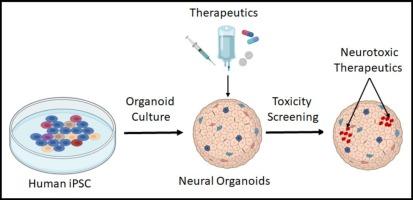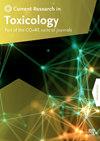神经类器官作为神经毒性建模的先进工具
IF 2.9
Q2 TOXICOLOGY
引用次数: 0
摘要
神经毒性研究通常依赖于传统的基于细胞的单一培养试验和动物模型,这有许多局限性。特别是,现有的模型要么缺乏适当的生理背景,不包括功能性血脑屏障,要么包括来自非人类物种的细胞。近年来,人类多能干细胞衍生的类器官的出现为了解疾病病因、发现药物、评估疗效和评估生理学相关背景下的毒性提供了新的机会。在神经毒理学研究中,由器官特异性前体细胞组成的类器官有可能克服传统二维细胞培养和动物模型的局限性。本文综述了人类类神经器官的研究进展,并对其在神经毒性检测中的应用进行了综述。我们还讨论了它们的一些局限性,并提供了它们在神经毒性研究中广泛应用的未来前景。本文章由计算机程序翻译,如有差异,请以英文原文为准。

Neural organoids as advanced tools for neurotoxicity modeling
Neurotoxicity studies often depend on traditional cell-based monoculture assays and animal models, which have a number of limitations. In particular, the existing models either lack the appropriate physiological context, do not include a functional blood–brain barrier, or include cells from non-human species. The recent emergence of organoids derived from human pluripotent stem cells has provided new opportunities to understand disease etiology, discover drugs, evaluate efficacy, and evaluate toxicity in physiologically relevant contexts. Organoids comprised of organ specific precursor cells can potentially overcome the limitations of the traditional 2D cell culture and animal models in neurotoxicology studies. Here, we provide a review of recent developments of human neural organoids, and summarize their applications in neurotoxicity testing. We also discuss their several limitations, and provide a future perspective on their widespread use in neurotoxicity studies.
求助全文
通过发布文献求助,成功后即可免费获取论文全文。
去求助
来源期刊

Current Research in Toxicology
Environmental Science-Health, Toxicology and Mutagenesis
CiteScore
4.70
自引率
3.00%
发文量
33
审稿时长
82 days
 求助内容:
求助内容: 应助结果提醒方式:
应助结果提醒方式:


